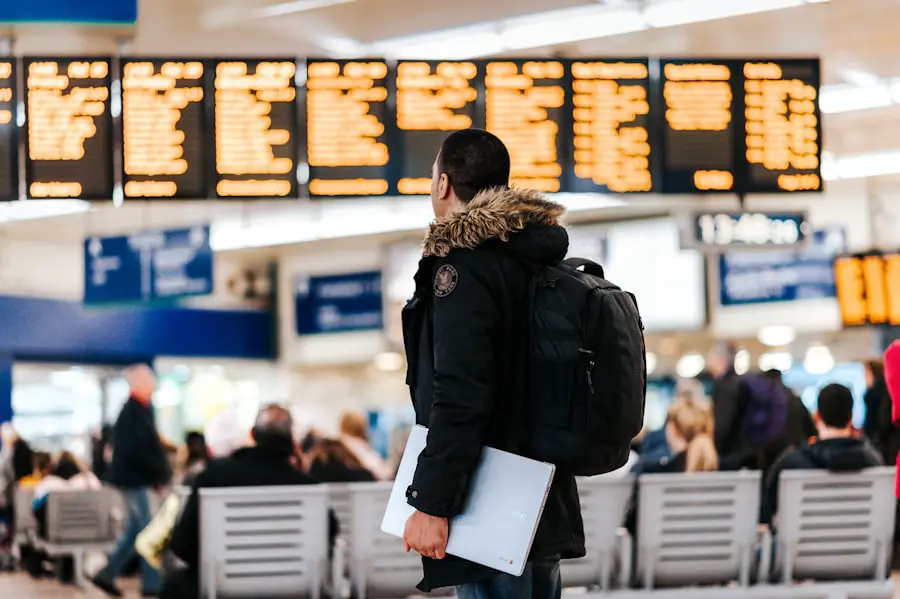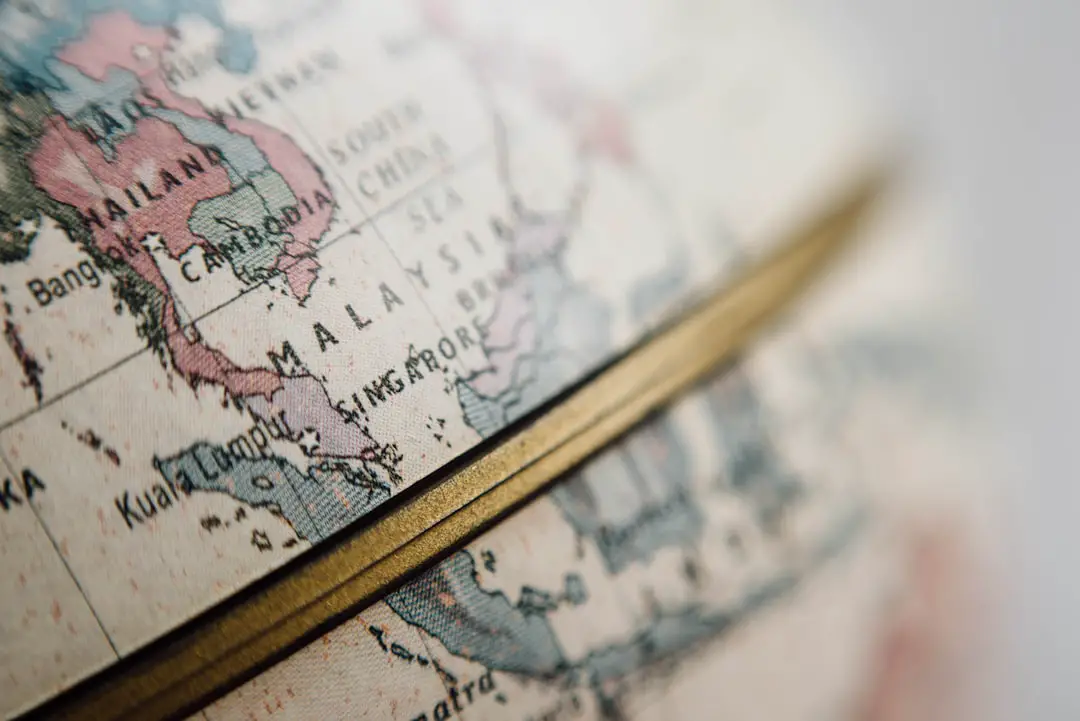Burma, also known as Myanmar, is a country rich in cultural heritage and natural beauty, characterized by a diverse climate that varies significantly across its regions. The climate is primarily tropical, influenced by the monsoon winds that sweep across the country, bringing distinct wet and dry seasons. The geographical diversity of Burma, with its mountains, plains, and coastal areas, contributes to the variations in weather patterns.
In the northern regions, the climate can be cooler due to higher altitudes, while the southern coastal areas experience a more humid and tropical climate. Understanding these climatic nuances is essential for travelers seeking to explore the country’s stunning landscapes and vibrant culture. The climate in Burma can be broadly categorized into three main seasons: the dry season, the monsoon season, and the shoulder season.
Each of these periods offers unique experiences and challenges for visitors. The dry season, which typically runs from November to February, is characterized by cooler temperatures and minimal rainfall, making it the most popular time for tourists. Conversely, the monsoon season, from June to October, brings heavy rains and can lead to flooding in certain areas, making travel more difficult.
The shoulder season, which falls between the dry and monsoon seasons, offers a compromise with fewer crowds and moderate weather conditions. By understanding these seasonal variations, travelers can better plan their visits to maximize their experiences in this enchanting country.
Key Takeaways
- Burma has a tropical monsoon climate with three distinct seasons: the dry season, the monsoon season, and the shoulder season.
- The best time to visit Burma is during the dry season, which runs from November to February, when the weather is cool and dry.
- Travelers should avoid visiting Burma during the monsoon season, from June to September, as heavy rainfall can lead to flooding and travel disruptions.
- The shoulder season, from March to May, offers a compromise for travelers, with fewer crowds and lower prices, despite the hot and humid weather.
- Timing your visit to Burma to coincide with festivals and events can provide unique cultural experiences, but it’s important to consider the weather and plan outdoor activities accordingly.
Best Time to Visit Burma: The Dry Season
The dry season in Burma is often regarded as the best time to visit due to its pleasant weather conditions. From November to February, temperatures are generally mild, ranging from 20°C to 30°C (68°F to 86°F) in most regions. This period is particularly favorable for exploring the ancient temples of Bagan, trekking in the Shan State, or enjoying the serene beauty of Inle Lake.
The clear skies and lower humidity levels create ideal conditions for outdoor activities and sightseeing. Travelers can expect vibrant sunsets over the temples of Bagan and clear views of the stunning landscapes that define this region. During the dry season, popular tourist destinations such as Yangon, Mandalay, and Bagan experience a surge in visitors.
This influx can lead to crowded attractions and higher accommodation prices. However, the vibrant atmosphere created by fellow travelers can enhance the experience of exploring local markets and cultural sites. Additionally, many festivals and events take place during this time, providing visitors with opportunities to engage with local traditions and customs.
For instance, the Tazaungdaing Festival in November celebrates the end of the rainy season with colorful lantern displays and traditional performances, offering a unique glimpse into Burmese culture.
The Monsoon Season: When to Avoid Traveling to Burma

The monsoon season in Burma typically spans from June to October and is characterized by heavy rainfall and high humidity levels. During this period, travelers may encounter challenges such as flooding, landslides, and transportation disruptions. While some regions may still be accessible, many popular tourist destinations become less appealing due to adverse weather conditions.
For instance, Bagan’s ancient temples may be shrouded in mist and rain, obscuring their beauty and making exploration difficult. Additionally, outdoor activities such as trekking or boat rides on Inle Lake may be hindered by inclement weather. Despite these challenges, some travelers may find advantages in visiting during the monsoon season.
Fewer tourists mean less crowded attractions and lower accommodation prices. Moreover, the lush landscapes that emerge from the rains can be breathtakingly beautiful. The countryside transforms into a vibrant green oasis, offering a different perspective on Burma’s natural beauty.
However, it is crucial for travelers to remain flexible with their plans during this season and stay informed about weather forecasts to avoid potential hazards.
The Shoulder Season: A Compromise for Travelers
| Destination | Shoulder Season | Advantages |
|---|---|---|
| Europe | Spring (April to June) and Fall (September to October) | Lower prices, fewer crowds, pleasant weather |
| Caribbean | Spring (April to June) | Less humidity, cheaper accommodations |
| Asia | Fall (September to November) | Cooler temperatures, vibrant festivals |
The shoulder season in Burma occurs between the dry and monsoon seasons, typically from late February to May and again from late October to early November. This transitional period offers a unique blend of advantages for travelers seeking a balance between favorable weather conditions and fewer crowds. During these months, temperatures begin to rise as the country transitions into the hotter months leading up to the monsoon season.
While it may be warmer than during the dry season, many travelers find the heat manageable for outdoor exploration. Visiting during the shoulder season allows travelers to experience Burma’s attractions without the overwhelming crowds typical of peak tourist times. For example, exploring the temples of Bagan or wandering through the streets of Yangon can be more enjoyable when not surrounded by large groups of tourists.
Additionally, accommodations may offer lower rates during this period as they seek to attract visitors before or after the peak season. This can provide an opportunity for travelers to enjoy more luxurious stays or unique experiences at a fraction of the cost.
Festivals and Events: Timing Your Visit for Cultural Experiences
Burma is a country steeped in rich traditions and cultural celebrations that reflect its diverse ethnic groups and religious practices. Timing your visit to coincide with local festivals can enhance your travel experience significantly. One of the most notable festivals is Thingyan, the Burmese New Year Water Festival, which usually takes place in mid-April.
This exuberant celebration involves water fights throughout cities and towns as people splash water on each other as a symbol of cleansing and renewal. Participating in Thingyan offers travelers a unique opportunity to engage with locals and immerse themselves in Burmese culture. Another significant event is the Taunggyi Balloon Festival held in November during the Tazaungdaing Festival.
This spectacular event features colorful hot air balloons launched into the sky at night, illuminating the landscape with their glow. The festival also includes traditional music performances and local food stalls that showcase Burmese cuisine. Attending such festivals not only provides insight into local customs but also fosters connections with communities that celebrate their heritage with pride.
Weather Considerations for Outdoor Activities

When planning outdoor activities in Burma, it is essential to consider how weather conditions can impact your experience. During the dry season, outdoor pursuits such as hiking in Kalaw or exploring Inle Lake by boat are particularly enjoyable due to mild temperatures and clear skies. The cooler evenings also provide an excellent opportunity for stargazing in remote areas away from city lights.
However, as temperatures rise during the shoulder season leading into summer, it is advisable to schedule strenuous activities for early mornings or late afternoons when temperatures are more bearable. In contrast, during the monsoon season, outdoor activities may be limited due to heavy rainfall and muddy trails. While some adventurous travelers may embrace trekking during this time for a unique experience of lush landscapes, it is crucial to be cautious about safety risks such as slippery paths or sudden downpours that can lead to flash floods.
Travelers should also consider alternative indoor activities such as visiting museums or cultural centers during inclement weather days.
Planning Your Trip: Booking Accommodations and Activities
When planning a trip to Burma, it is vital to consider your travel dates carefully based on seasonal weather patterns and local events. Booking accommodations well in advance during peak tourist seasons ensures you secure your preferred lodging options at reasonable rates. Many hotels offer discounts for early bookings or extended stays during shoulder seasons when demand is lower.
Additionally, researching local tour operators who specialize in guided experiences can enhance your trip by providing insights into hidden gems that may not be on typical tourist itineraries. It is also beneficial to remain flexible with your itinerary when traveling in Burma due to potential weather-related disruptions during the monsoon season or unexpected events during peak times. Having alternative plans or backup activities can help ensure that your travel experience remains enjoyable regardless of changing circumstances.
Engaging with local guides can provide valuable knowledge about current conditions and recommendations for safe travel routes.
Making the Most of Your Visit to Burma
Traveling through Burma offers an opportunity to explore a land rich in history, culture, and natural beauty shaped by its diverse climate. By understanding seasonal variations and planning accordingly—whether visiting during the dry season for optimal weather or embracing cultural festivals—travelers can create memorable experiences that resonate long after their journey ends. With careful consideration of weather patterns and local events, visitors can navigate this enchanting country while immersing themselves in its vibrant culture and breathtaking landscapes.
FAQs
What is the best time to travel to Burma?
The best time to travel to Burma is during the cool and dry season, which runs from November to February. This is when the weather is most pleasant and ideal for sightseeing and outdoor activities.
What is the weather like in Burma during the best time to travel?
During the cool and dry season, the weather in Burma is generally mild and dry, with temperatures ranging from 20°C to 30°C. This makes it comfortable for exploring the country’s attractions and landscapes.
Are there any specific events or festivals to consider when planning a trip to Burma?
The Thadingyut Festival, also known as the Lighting Festival, is celebrated in October and marks the end of the Buddhist Lent. This is a vibrant and colorful time to visit Burma, with street parades, traditional performances, and illuminated pagodas.
What are the main tourist attractions to visit in Burma during the best time to travel?
Some of the must-see attractions in Burma during the best time to travel include the ancient city of Bagan with its thousands of temples, the serene Inle Lake, the bustling city of Yangon with its iconic Shwedagon Pagoda, and the historic Mandalay.
Are there any travel tips for visiting Burma during the best time?
It’s advisable to book accommodations and transportation in advance, especially during the peak tourist season. Additionally, it’s important to respect local customs and traditions, such as dressing modestly when visiting religious sites.
